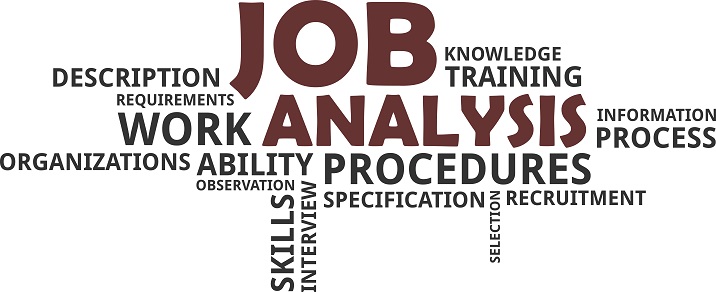
- HRM – Home
- HRM – Introduction
- HRM – HR & Business Strategy
- HRM – Planning
- HRM – Talent Management
- HRM – Training & Development
- HRM – Performance Management
- HRM – Employee Engagement
- HRM – Employee Performance
- HRM – Compensation Management
- HRM – Rewards & Recognition
- HRM – Organizational Culture
- HRM – Workplace Diversity
- HRM – Industrial Relations
- HRM – Dispute Resolution
- HRM – Ethical Issues
- HRM – Audit & Evaluation
- HRM – International HRM
- HRM – eHRM
- HRM – Small Scale Units
HRM - Planning
Human Resource Planning (HRP) is the process of foreseeing the requirement of human resources in an organization. The objective is also to determine how the existing human resources best fit in their jobs.
Thus, it focuses on the basic economics concept of demand and supply in the context of the human resource capacity of an organization.
Components of HRP
The following are the components of human resource planning −
Current HR Supply
It involves a comprehensive study of human resource strength in the organization with respect to the numbers, skills, talents, competencies, qualifications, experiences, age, tenures, performance ratings, designations, grades, compensations, benefits, etc.
At this stage, the consultants may organize extensive interviews with the managers to understand the critical HR issues they face and basic workforce abilities as crucial for various business processes.
Future HR Demand
All the known HR variables like attrition, lay-offs, foreseeable vacancies, retirements, promotions, pre-set transfers, etc. are considered while selecting future HR demand. Further, specific unknown workforce temporaries like competitive factors, resignations, abrupt transfers or dismissals are also involved in the scope of analysis.
Demand Forecast
It is important to understand the business strategy and the objectives of the organization in the long run so that the workforce demand forecast is aligned to the organizational goals.
HR Sourcing Strategy and Implementation
Sourcing strategy and implementation may involve conducting interaction programs with employees, relocation, talent acquisition, recruitment and outsourcing, talent management, training and coaching, and revision of policies. The plans are then executed taking into confidence the mangers so as to make the process of execution smooth and efficient.
Even though HR Planning sounds quite simple as a process of managing the numbers in terms of human resource needs of the company, the actual exercise may include the HR manager to face many roadblocks owing to the effect of the current workforce in the company, pressure to meet the business objectives and prevailing workforce market condition.
Thus, a properly conducted process of HR Planning by an HR Consulting company helps the company in meeting its aims and objectives in a timely manner with the right HR strength in action.
Job Analysis
It is the process of identifying and choosing elaborated contents of a particular job, thus clearly defining duties, rules, responsibilities, accountabilities, and skills related to the job.

Job analysis is the process of analyzing the job what is the demand and requirement for the job, and not of the individual.
The process of job analysis gives two sets of data −
Job description − Job description is a written statement including complete information about what all a job holds, like job title, duties, tasks and responsibilities related to job, working conditions and hazards, reporting relationships, tools, machines and equipment to be used, and relationships with other designations.
Job specification − Job specification includes particulars regarding the capabilities that an individual should possess to perform the assigned tasks efficiently. This includes educational qualification, experience, training, appropriate skills, knowledge, and abilities required to perform the job.
Job Design
Job design is a continuous and ever-evolving process that is targeted at helping employees in making adjustments with the changes at the workplace. The end goal is minimizing dissatisfaction and enhancing motivation and employee engagement at the workplace.
There are various steps involved in job designing, but all these steps follow a logical sequence. Every step has its own importance and no step can be neglected during the designing process. The sequence is given below −
- What jobs are to be done or what jobs are a part of the job?
- How are the jobs performed?
- What amount of jobs is required to be done?
- What is the procedure of performing these tasks?
All these questions are considered while arriving upon a clear definition of a specific job, thereby making it less risky for the one performing the same. A well-defined job creates a feeling of achievement and a sense of high self-esteem among the employees.
Job Evaluation
In contrast to job specification, job evaluation specifies the relative value or worth of each job in a company by examining the task and ranking the jobs accordingly.
Job evaluation cab be done by any of the following methods −
Points rating − Different levels are allotted to the various elements of jobs and then the points allocated to different levels are summarized to get the point score of the jobs. It forms the basis of pay structure.
Factor comparison − A comparison of different independent factors of jobs is done and points are given to each factor scale of individual job. These points are then aggregated to rank the jobs.
Job ranking − A job is not broken into factors or elements; instead, it is evaluated as a complete process and is compared with other jobs. After proper evaluation, jobs are scaled accordingly.
Paired comparison − Jobs are compared with each other and points are allocated depending on being higher, lesser or equal. These points are added to prioritize the order of jobs. The jobs with higher priorities are given more attention as compared to others.